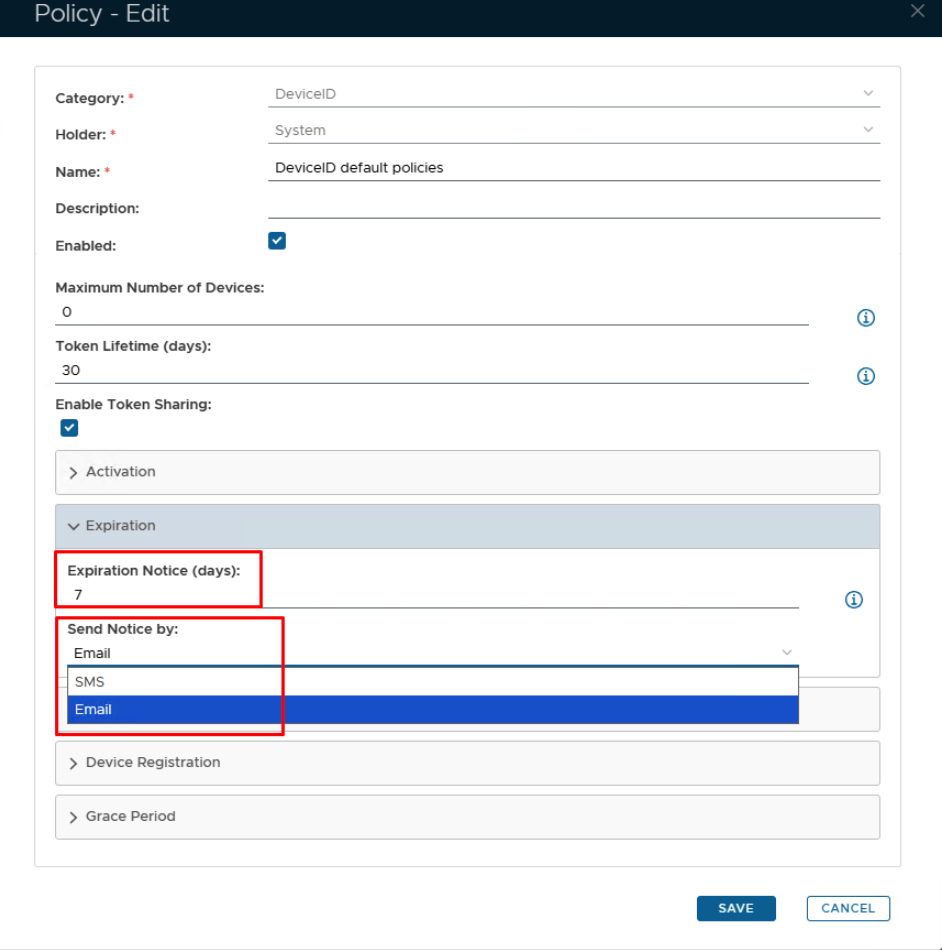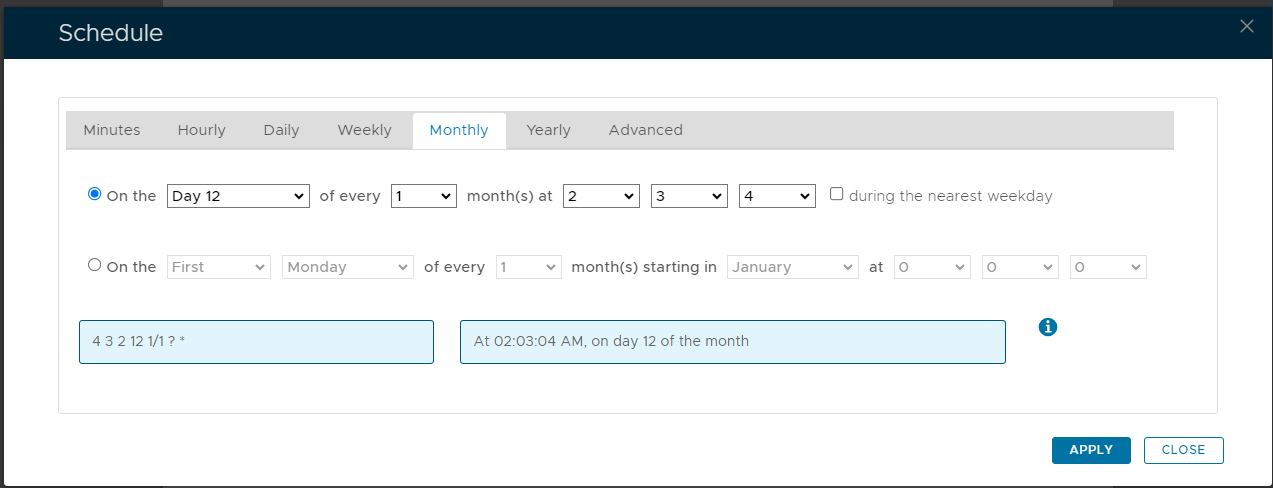If you have enabled the token expiration options in the DeviceID policy, then you must also set up the task called "Token Notification Service"
Introduction
The "Token Notification Service" task periodically checks if tokens are about to reach their expiration time, and sends out notification messages to the users.
A token expiry notification may be sent based on the date of token creation and the value specified in the DeviceID policy setting "Expiration Notice (days):" (see below);
The task can be found by navigating to "Administration | Tasks", then scrolling down to the task "Token Notification Service";
Editing and Scheduling the Task
Viewing and Editing the task
By default, the Token Notification task is not enabled, but may be enabled by left clicking on the context menu of the task and selecting "Edit";
A new window will now open titled "Task - Edit";
Scheduling the Task
Select the "Enable Schedule" checkbox to ensure the task schedule is activated, then use the pencil icon ("") to specify the time and frequency settings for automated task execution.
Manual Task Execution
The task can be run manually from the management console by left click on the context menu of the task, then selecting "Run";
A new window will open titled "Execute Task" will then open;
You can add a description, however, this is optional. Click the button.












